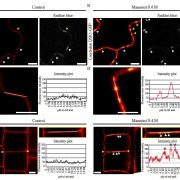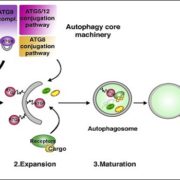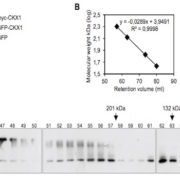Review: Shaping plastid stromules — principles of in vitro membrane tubulation applied in planta ($) (COPB)
 Stromules (or stroma-filled tubules) have been observed for more than 100 years, but uncertainty remains about their formation and function. Stromules are extensions of the plastid membrane that form highly dynamic tubule-like structures that sometimes interact with other plastids or organelles. Hypothetical functions include increasing the surface area of plastids (for increased transport), movement of proteins or metabolites between organelles, plastid anchoring, and signaling. Erickson and Schattat review recent studies on the basis of stromule formation, and attempt to consolidate data from in vitro and in planta studies. After reviewing recent studies, the authors conclude, “Current data suggest that a combination of actin, microtubules and associated motor proteins contribute to stromule regulation, but not via a single mechanism.” (Summary by Mary Williams) Curr. Opin. Plant Biol. 10.1016/j.pbi.2018.07.003
Stromules (or stroma-filled tubules) have been observed for more than 100 years, but uncertainty remains about their formation and function. Stromules are extensions of the plastid membrane that form highly dynamic tubule-like structures that sometimes interact with other plastids or organelles. Hypothetical functions include increasing the surface area of plastids (for increased transport), movement of proteins or metabolites between organelles, plastid anchoring, and signaling. Erickson and Schattat review recent studies on the basis of stromule formation, and attempt to consolidate data from in vitro and in planta studies. After reviewing recent studies, the authors conclude, “Current data suggest that a combination of actin, microtubules and associated motor proteins contribute to stromule regulation, but not via a single mechanism.” (Summary by Mary Williams) Curr. Opin. Plant Biol. 10.1016/j.pbi.2018.07.003









